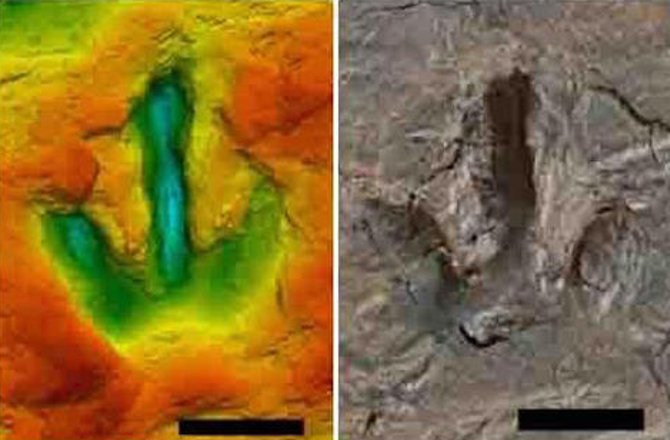-
Tips for becoming a good boxer - November 6, 2020
-
7 expert tips for making your hens night a memorable one - November 6, 2020
-
5 reasons to host your Christmas party on a cruise boat - November 6, 2020
-
What to do when you’re charged with a crime - November 6, 2020
-
Should you get one or multiple dogs? Here’s all you need to know - November 3, 2020
-
A Guide: How to Build Your Very Own Magic Mirror - February 14, 2019
-
Our Top Inspirational Baseball Stars - November 24, 2018
-
Five Tech Tools That Will Help You Turn Your Blog into a Business - November 24, 2018
-
How to Indulge on Vacation without Expanding Your Waist - November 9, 2018
-
5 Strategies for Businesses to Appeal to Today’s Increasingly Mobile-Crazed Customers - November 9, 2018
Researchers find footprints of two carnivorous dinosaurs in Germany
Seemingly, both dinosaurs weren’t in a hurry when they left the prints.
Advertisement
Yahoo reported that researchers found footprints of two carnivorous dinosaurs of the species Megalosauripus that strolled in Germany about 142 million years ago.
A few times, the smaller dinosaur has to trot in order to catch up to the big one; the average speed is about 6.3 km/hr for the big one and 9.7 km/hr for the small one. Troelsen also revealed that the smaller one left evidence of crossing its legs as it walked; the biologist said that there were many potential causes for this particular gait, including possibly wanting to stay closer to the larger dinosaur, finding something to eat, or even losing its balance on the slippery sand or from being buffeted by a strong wind.
Pernille Troelsen, a biologist of the University of Southern Denmark and co-author of the study, explained that the animals were virtually walking on the beach since the paces are unusually slow for them who are otherwise active and fast predators. 50 km from Hannover.
The ca. 50 tracks investigated have previously been subject to a variety of geological surveys, but Pernille Venø Troelsen is the first to thoroughly examine them as a biologist, and this provides a different kind of information than the geologically based surveys.
Since the last 200 years there have been a string of scientists who have been reaching the Bückeberg Formation in Germany with an aim of studying fossilized dinosaur footprints and tracks that are suggestive of their nature and behavior.
“As a biologist, I can contribute with knowledge about behavior of the individual animals”, she says. Others studies had shown that some dinosaurs also displayed social behavior such as hunting together or having “daycares” where female dinosaurs took care of young dinosaurs together.
However for now it is not clear whether the megalosauripus footprints were made at the same time.
It’s also possible that the tracks may have been created many years apart, and randomly crossed each other’s tracks. The prints belong to two dinosaurs – one smaller and one larger – that may have been a parent and offspring.
The fact that flesh eating dinosaurs can run up to a speed of 25 miles per hour suggest that these two were particularly in a strolling mood. They were of app. same sze as the velicoraptor, known by many from the film Jurassic Park.
One of the footprints was 14.3 inches long which is greater than a man’s 15 shoe size, while the smaller footprint was 9.3 inches long which is about size 6 in man shoes.
Advertisement
Researchers have found dinosaur footprints in a number of European countries, including England, northern Germany and Spain, majority dated to the Lower Cretaceous period, from about 140 million to 145 million years ago, she said.




























